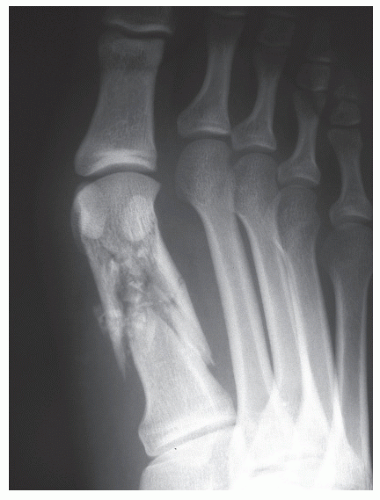
The surgeon may also apply a bone healing stimulator – a device that sends current to speed up healing.įor patients that have experienced a 5th metatarsal fracture, please refer them to a podiatrist. Occasionally, the surgeon will need to remove tiny pieces of bone from the fracture site to repair it with a bone graft. This insertion will remain in place after healing. Podiatrists may recommend surgery for elite athletes or if bones are out of place by over three millimeters.ĭuring this procedure, the surgeon will implant a rod, pin, screw, or plate to stabilize the bones in the foot. Last, diaphyseal fractures are typically treated conservatively but need surgery if the fragments of bone are dislocated. The tuberosity avulsion fracture is treated nonoperatively – similar to a Jones fracture.

Conversely, an athlete may require surgery to decrease the healing time and facilitate proper fracture fusion. With a standard Jones fracture, the patient may be fitted in a boot and advised not to bear weight on the foot for six weeks. During this treatment, he or she will wear a boot, cast, or stiff-soled shoe to stabilize the foot while it heals. Immobilization: A podiatrist may recommend immobilization if your patient’s bone is in place. A shaft fracture with acceptable alignment should be treated with heel touchdown weight-bearing. With proximal metatarsal fractures, injury to the proximal ligaments (Lisfranc injury) should be excluded. Metatarsal shaft fractures are common injuries, and cause pain and. For the 1st metatarsal, a stress X-ray may help determine whether treatment should be operative or nonoperative. A podiatrist can treat your patient’s broken bone with immobilization or surgery. The metatarsals are the long bones in the forefoot that lead up to the toes. Treatments For 5th Metatarsal Fracturesįortunately, fractures of the 5th metatarsal are usually treatable without surgery. These fractures frequently happen due to inadequate blood supply and often require surgery.ĭiaphyseal Fracture–This fracture occurs at the end of the shaft of the 5th metatarsal. Jones Fracture–A fracture in the 5th metatarsal's head and shaft. A difference of millimeters in location may lead to a vastly different prognosis and treatment plan a suboptimal treatment regimen can cause delayed union, reinjury, and chronic pain and disability. Tuberosity Avulsion Fracture–This fracture occurs when the tendons and ligaments are detached from the 5th metatarsal bone. INTRODUCTION Fractures of the proximal fifth metatarsal pose an important diagnostic challenge. There are different types of metatarsal fractures. The foot includes five metatarsals, which bridge the distance to other bones in the foot. About a 5th Metatarsal Fractureįifth metatarsal fractures are common in the foot, which is a complicated structure that bears weight and allows movement. This article discusses the nature of fractures and the treatments available. Treatment options for this condition range from conservative to surgical. Overuse or injury, as well as high arches, causes these types of fractures. This is the long, lateral, tubular bone of the forefoot connected to the small toe. You can buy arch supports over-the-counter, or they can be custom fitted.If your patient is experiencing pain, swelling, and tenderness on the outside of the foot, they may have fractured their 5th metatarsal. Apply ice packs or a bag of frozen peas wrapped in a wet thin.


If insoles don't help, your doctor might recommend arch supports to minimize stress on the metatarsal bones and improve foot function. Ice is a great natural anaesthetic that helps relieve pain and controls swelling.

These off-the-shelf pads are placed in your shoes just ahead of the metatarsal bone to help deflect stress from the painful area. Wear shoes appropriate to the sports you play. Avoid too-tight or too-loose shoes and limit your wearing of high heels. Try ibuprofen (Advil, Motrin IB, others), naproxen sodium (Aleve) or aspirin to reduce pain and inflammation.


 0 kommentar(er)
0 kommentar(er)
